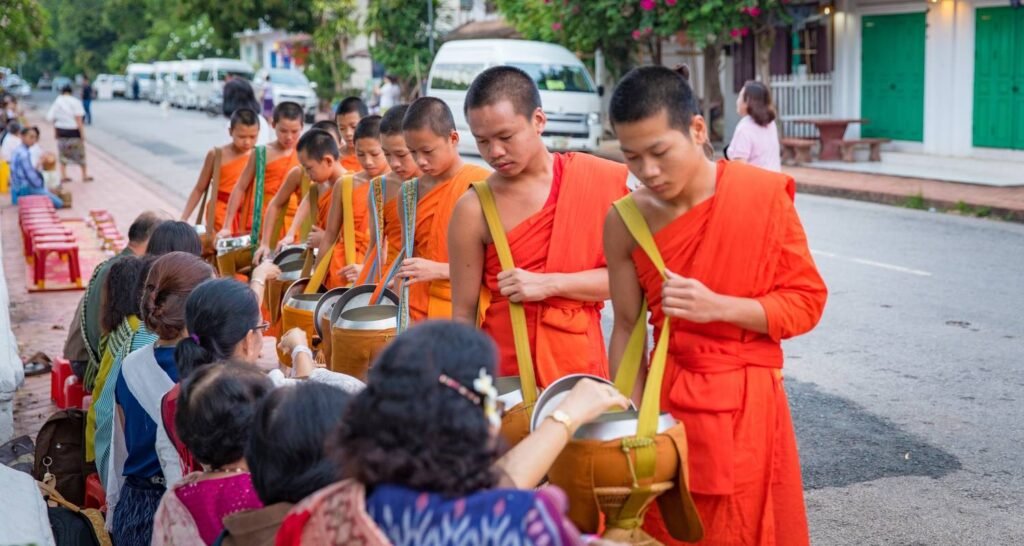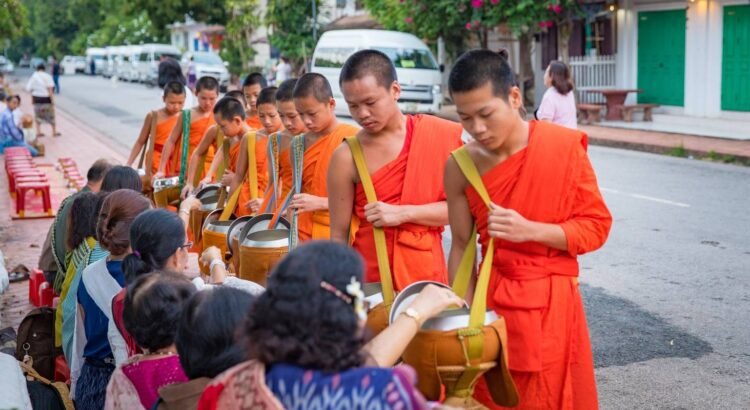
In many parts of Asia, the spiritual serenity of Buddhist temples is inextricably tied to the awe-inspiring majesty of the mountains. Perched on craggy cliffs, nestled in misty valleys, or carved into rock faces high above sea level, these sacred spaces have long served as sanctuaries for monks, pilgrims, and seekers of peace. Here, amid sweeping panoramas and crisp alpine air, the ancient wisdom of Buddhism blends harmoniously with nature’s most dramatic creations.
Exploring Buddhist temples among mountain landscapes is more than a physical journey; it’s a meditative experience that connects you to the past, the present, and the eternal rhythms of the Earth. From the snow-covered Himalayas of Nepal and Bhutan to the forested peaks of Japan and the limestone karsts of Vietnam, these spiritual retreats invite reflection, reverence, and wonder. Let us journey through some of the world’s most enchanting temple-mountain pairings and discover why this union of the sacred and the sublime continues to captivate travelers from around the globe.
Himalayan Majesty: Temples on the Roof of the World
No conversation about mountain temples is complete without mentioning the Himalayas, the highest mountain range on Earth and home to some of Buddhism’s most iconic sacred sites. Stretching across Nepal, Bhutan, Tibet, and parts of India, the Himalayas have served for centuries as a cradle of spiritual enlightenment.
One of the most revered sites is Tiger’s Nest Monastery (Paro Taktsang) in Bhutan, dramatically clinging to a cliffside 900 meters above the Paro Valley. Legend says Guru Padmasambhava, who introduced Buddhism to Bhutan, flew to this location on the back of a tigress and meditated in a cave for three years. The temple complex, built in the 17th century, is an architectural marvel and spiritual magnet. The trek to reach it — a steep uphill climb through pine forests and along rocky ridges — is itself a pilgrimage, offering sweeping views and a profound sense of accomplishment.
In Nepal, the Boudhanath Stupa in Kathmandu may not be high in the mountains, but it is surrounded by Himalayan peaks and serves as a spiritual hub for Tibetan Buddhists. Pilgrims circle the massive white dome, spinning prayer wheels and chanting mantras, while monks in crimson robes perform daily rituals under the watchful eyes painted on the stupa’s tower.
Further afield, the remote Tsum Valley and Upper Mustang regions offer opportunities to visit centuries-old gompas (monasteries) nestled in some of Nepal’s most isolated terrain. The journey requires effort, but the reward is unparalleled: flickering butter lamps, ancient murals, and prayer flags fluttering against the backdrop of snow-capped peaks.
Bhutan: A Living Buddhist Kingdom
Bhutan, the only Vajrayana Buddhist kingdom in the world, is a land where spirituality permeates daily life. Monasteries and dzongs (fortress-temples) are not just historical relics; they are active centers of worship and community life.
Beyond Tiger’s Nest, other awe-inspiring mountain temples include Punakha Dzong, located at the confluence of two rivers and surrounded by lush hills. In spring, when jacaranda trees bloom, the entire complex appears bathed in a soft purple hue — a vision of serenity.
Trongsa Dzong, dramatically positioned on a ridge overlooking the Mangde River, is another must-see. It serves as a spiritual and administrative center and offers panoramic views of the valleys below. Monastic life here is deeply embedded in tradition, with rituals, chants, and masked dances performed throughout the year.
In Bhutan, the mountains aren’t just scenery — they’re sacred. Many peaks are believed to be the abodes of deities and are thus never climbed. This reverence for the natural world enhances the spiritual aura of every temple visit, deepening your appreciation for both the faith and the landscape.
Japan: Forested Peaks and Zen Serenity
In Japan, Buddhist temples often blend with Shinto shrines and are nestled among verdant hills and volcanic mountains. The harmonious relationship between nature and spirituality is a hallmark of Japanese religious practice, and nowhere is this more evident than in places like Mount Koya, Mount Hiei, and Mount Haguro.
Mount Koya (Koyasan), the heart of Shingon Buddhism, is a tranquil retreat in Wakayama Prefecture. Here, over 100 temples are hidden among ancient cedar forests. Visitors can stay overnight in temple lodgings (shukubo), participate in meditation, and taste shojin ryori, a traditional vegetarian meal prepared with spiritual mindfulness.
Mount Hiei, on the border between Kyoto and Shiga, houses Enryaku-ji, a UNESCO World Heritage Site and headquarters of the Tendai sect. This mountainous complex played a crucial role in Japanese Buddhism and was once a center of scholarly learning. Today, it offers peaceful hikes, moss-covered paths, and temples steeped in history.
Even Mount Fuji, Japan’s iconic peak, has its spiritual ties. Though primarily sacred in Shinto, several Buddhist temples and shrines mark the ascent to its summit. Climbing Fuji at sunrise is a powerful, almost religious experience — a communion with the forces of nature and a personal rite of passage.
China: Sacred Mountains of Buddhist Pilgrimage
China is home to four Sacred Mountains of Chinese Buddhism — Mount Wutai, Mount Emei, Mount Jiuhua, and Mount Putuo — each with its own divine association and cluster of revered temples.
Mount Emei, in Sichuan Province, is one of the oldest Buddhist sites in China. Ascending its slopes reveals ancient temples, cascading waterfalls, and golden statues partially veiled by clouds. The Golden Summit Temple at the peak seems to float above the clouds, offering one of the most ethereal sunrise views in all of Asia. Monkeys populate the forested paths, and incense smoke blends with mountain mist to create an atmosphere that feels both sacred and surreal.
Mount Wutai, located in Shanxi Province, is known for its five flat peaks and is believed to be the earthly abode of the bodhisattva Manjushri. Its temple complexes are some of the most architecturally diverse and historically significant in China, and pilgrims journey here year-round for blessings and teachings.
In China, these mountains are not just tourist attractions — they are active pilgrimage routes. As you climb, you’ll encounter monks, nuns, and laypeople making prostrations, chanting sutras, or walking barefoot as acts of devotion. Their presence adds a spiritual gravity to the journey that resonates far beyond the physical landscape.
Southeast Asia: Lush Hills and Timeless Tranquility
In Southeast Asia, Buddhist temples are often located amid jungle-covered hills and misty highlands. The region is rich in both Theravāda and Mahayāna traditions, and its mountain temples are known for their beauty and accessibility.
Wat Phra That Doi Suthep, perched on a mountain overlooking Chiang Mai, Thailand, is one of the country’s most revered temples. The journey to the top involves a winding drive and a 306-step staircase guarded by ornate naga serpents. Once at the summit, you are rewarded with panoramic views of the city below and a golden chedi that glows in the sun.
In Myanmar, the mountaintop Golden Rock Pagoda (Kyaiktiyo) is an iconic pilgrimage site. Balancing precariously on the edge of a cliff, this boulder is believed to be held in place by a single strand of the Buddha’s hair. Devotees climb for hours to touch the rock and make offerings, especially during the glowing twilight hours.
Vietnam’s Perfume Pagoda, located in a karst mountain range near Hanoi, is accessible only by boat and a long climb or cable car ride. The journey itself — along a peaceful river flanked by limestone cliffs — is a serene introduction to the spiritual experience awaiting in the pagoda’s cave shrine.
Beyond the Physical: A Spiritual Encounter
While the beauty of mountain temples is undeniable, their true power lies in the stillness they invite. Standing among chanting monks, beneath ancient wooden beams or gilded stupas, you begin to feel the slow turning of a much older clock. The mountains silence the noise of modern life, and the temples provide space to listen — not just to external teachings, but to the quiet voice within.
Visitors often report feelings of clarity, humility, and peace while exploring these places. The combination of physical exertion (hiking or climbing), natural beauty, and spiritual immersion can be transformative. Many travelers leave not just with photographs, but with a deeper understanding of impermanence, gratitude, and the sacredness of life.
Practical Tips for Exploring Mountain Temples
- Dress Respectfully: Temples often require shoulders and knees to be covered. Loose, modest clothing is advisable.
- Time Your Visit: Early mornings often provide the most peaceful experiences and the clearest views in mountainous regions.
- Embrace the Journey: Many temples require effort to reach. Consider this part of the pilgrimage — a moment to reflect, not just rush.
- Listen and Learn: Engage with monks or guides when possible. Their insights can enhance your understanding of both the temple and its teachings.
- Be Mindful: Maintain silence where appropriate, avoid intrusive photography, and treat the space with reverence.
A Sacred Union of Earth and Spirit
The union of Buddhist temples and mountain landscapes is one of the most profound travel experiences on Earth. These places are not simply architectural achievements or scenic viewpoints — they are gateways to inner peace, repositories of ancient wisdom, and testaments to humanity’s eternal yearning for something higher.
Whether you are a devoted practitioner or a curious traveler, the journey through these mountain sanctuaries offers more than just beauty. It offers a pause in the rush of life, a deep breath in the thin mountain air, and a rare glimpse into the sacred architecture of both stone and spirit.
Let your next adventure take you higher — not only in altitude but in awareness. Among the mountains and temples, you may just find a piece of yourself.




